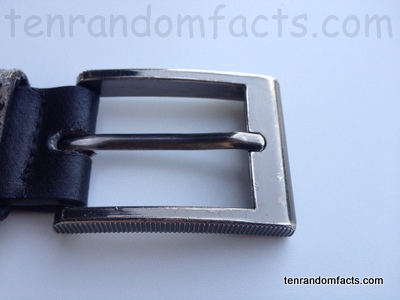Do you take the invention of the buckle for granted?
- Buckles are inventions with the primary purpose of linking the ends of two objects, usually strips.
- Buckles are commonly used in fashion either to decorate and/or fasten an item, like belts, sandals or other shoes, and bags, although they can be used to hold strings, strips or other items together, and are used on straps for safety purposes when restraining children in car seats, prams, shopping trolleys, and high chairs.
- ‘Buckles’ are also known as ‘clasps’ and they are available in numerous designs, sizes and colours.
- The term ‘buckle’ comes from the Latin word ‘buccula’, which translates as ‘cheek strap’, referring to helmet straps.
- Buckles were used in Ancient Rome where soldiers utilised the item to fasten together armour, and knights from the Middle Ages also used this invention for a similar purpose.
- Originally buckles were reserved for soldiers or those with lots of money due to the expensive manufacturing process, until the 1400s when methods were created to make the process less expensive.
- Traditional buckles are made of a chape to hold the invention in place on an object, a prong used to secure the opposite end of an object, and a frame and a bar used to support the said parts.
- Buckles were originally made of a metal, normally bronze, while today they can also be made of shell, wood, plastic, and leather.
- Before the invention of the zipper, buckles were one of the main ways to clasp an item together.
- Many modern buckles typically made of plastic, have two ends that snap securely and snugly together, and are perhaps more common than the traditional version, and they are often known as ‘snap fit’ or ‘side release’.
Bibliography:
Buckle, 2015, Wikipedia, https://en.wikipedia.org/wiki/Buckle
History of belt buckles, 2013, Fort Tumbleweed, http://www.forttumbleweed.net/beltbucklehistory.html






